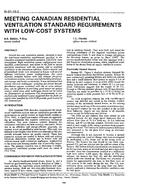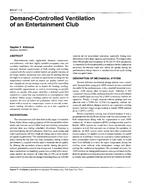This study examines the human health implications of natural ventilation in California office buildings. We modeledwork-time indoor ozone and particle exposures using data from four case studies in naturally ventilated offices andpublished data from mechanically ventilated offices. We also modeled the amount of time that windows would be open inthe naturally ventilated office and used the results to estimate the difference in pollutant exposures for occupants ofnaturally ventilated versus mechanically ventilated, air-conditioned offices. Applying published concentration-responseequations, the incremental changes in health outcomes that resulted from the difference in ozone and particle exposures foroccupants in the two types of offices were modeled. We also estimated the differences in sick building symptom prevalencerates based on prior studies in naturally ventilated and air-conditioned offices. First-order estimates were produced of thehealth-related costs and benefits of retrofitting 10 percent of California’s office space to use natural ventilation. Findingsincluded a reduction in sick building syndrome symptoms valued between $4.3 million and $11.5 million per year andannual health-related costs between $130 million and $207 million from increased exposure to ozone and particles. Ourestimates have a high degree of uncertainty and exclude potentially significant health-related costs and benefits of bothnaturally ventilated and air-conditioned buildings. Nonetheless, these estimates indicate that health-related costs of naturalventilation are significant and warrant further study. Mitigation options that could limit the health and economic impacts ofnatural ventilation are discussed.
Citation: IAQ Conference: IAQ 2013: Environmental Health in Low Energy Buildings
Product Details
- Published:
- 2013
- Number of Pages:
- 10
- File Size:
- 1 file , 2.2 MB
- Product Code(s):
- D-2013IAQConf-03


